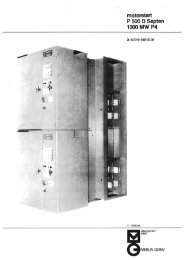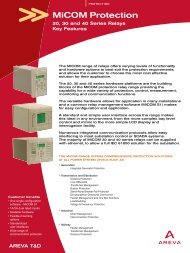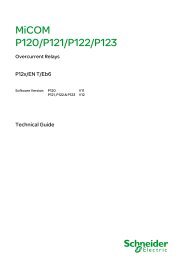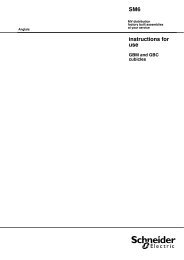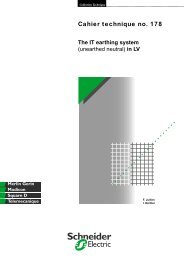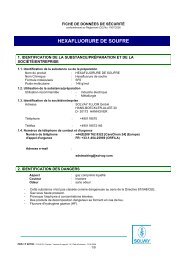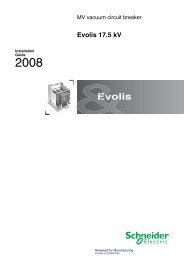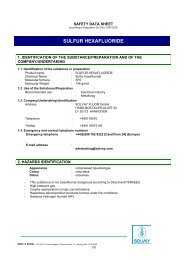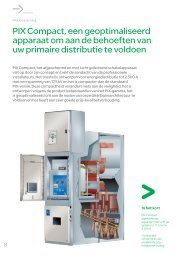Sepam Ethernet Guide - Schneider - error
Sepam Ethernet Guide - Schneider - error
Sepam Ethernet Guide - Schneider - error
Create successful ePaper yourself
Turn your PDF publications into a flip-book with our unique Google optimized e-Paper software.
<strong>Sepam</strong> <strong>Ethernet</strong> <strong>Guide</strong>Network architectureInfrastructure componentsTo achieve the desired networkarchitecture, it is necessary to use a numberof infrastructure components that have aprecise role and behavior. The maincomponents are described here.DE806831 1RepeatersRepeaters are layer 1 devices that regenerate frames and enable an increase in thedistance and the quantity of devices on a segment. They are inexpensive electronicdevices with no embedded intelligence. Their usage is no longer appropriate.Repeater.HubsDE80684Hub.11 1 1 1Hubs, sometimes called multiport repeaters, are also layer 1 devices used tointerconnect several devices in a star configuration and extend the network length.In general, hubs are plug-and-play devices that require no configuration. Hubs aretransparent to other devices, they receive information through any of their ports andpass along that information to all of their other ports. A limited number of hubs can becascaded.Devices interconnected by hubs are in the same collision domain and must operateat the same speed.Hubs are generally replaced today by switches, but some of them can still be foundon networks. They may also be used temporarily to connect diagnostic equipment toa network.SwitchesDE80685Switch.212 2 2 21 1 1 1Switches are active components used to connect several devices in a starconfiguration but unlike hubs they operate at layer 2, thus providing many benefits:b Every port and its associated device is a separate collision domain, enabling fullduplexoperation, if the device is able to.b Ports can operate at different speeds and use different media.b An incoming packet is sent only to the relevant destination ports, which greatlyalleviates network traffic.b Switches can isolate traffic belonging to different virtual networks to improvesecurity and availability.b Switches can provide flow control.b An unlimited number of switches can be cascaded to extend the length of thenetwork.Switching technologyThere are 2 types of switching, cut-through and store-and-forward:b Cut-through switching begins to forward a packet when its first bytes are received,which can cause network disruption if the packet is corrupt.b Store-and-forward switching waits for the entire packet to arrive and checks thepacket for corruption before forwarding it to the correct port. It also allows forimproved switching features. The time delay for the process is minimal, less than 1ms on an industrial network.Only store-and-forward switches are considered in this document as they are muchmore powerful and also the most widely used today.Managed versus unmanagedUnmanaged switches are not addressable and cannot be configured; therefore theyoffer only the basic switching capabilities described above.Conversely, managed switches have their own IP address and can be configuredusing SNMP or private interfaces and offer many other features:b isolation of traffic belonging to different virtual networks to improve security andavailabilityb flow control and rate limitingb topology managementb advanced diagnostics capabilities.14 SEPED310018EN - 10/2010



